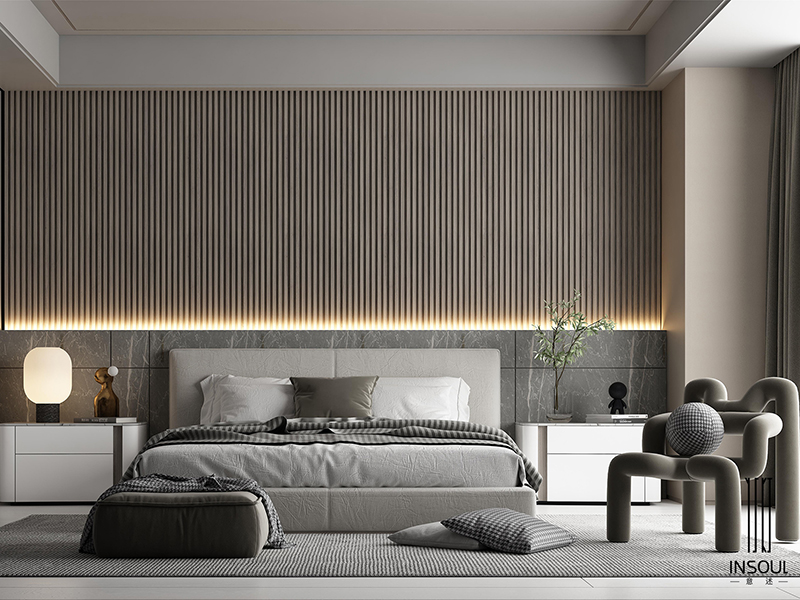Installing WPC (Wood-Plastic Composite) fluted wall panels in environments with varying humidity and temperature conditions requires careful consideration of several factors to ensure the panels maintain their integrity, appearance, and functionality over time. These factors include material properties, installation techniques, environmental conditions, and maintenance practices. In this comprehensive guide, we will delve into each of these aspects to provide a thorough understanding of the considerations necessary for a successful installation of WPC fluted wall panels in diverse settings.
1. Material Selection and Quality:
The first step in ensuring the durability of WPC fluted wall panels in fluctuating environments is selecting high-quality panels. Choose panels from reputable manufacturers that use quality WPC material with appropriate additives and treatments to enhance resistance to moisture, temperature changes, and UV radiation. Panels with advanced coatings or surface treatments can offer additional protection against the effects of humidity and temperature variations.
2. Expansion and Contraction:
WPC fluted wall panels, like any other materials, will expand and contract with changes in temperature and humidity. It's crucial to account for these natural movements during installation to prevent warping, buckling, or gaps between panels. Installers should follow manufacturer guidelines for spacing and provide sufficient room for expansion, typically by leaving a small gap at the panel edges.
3. Acclimatization:
Before installation, allow the WPC fluted wall panels to acclimate to the environment where they will be installed. This involves storing the panels in the installation area for a period of time, allowing them to adjust to the temperature and humidity conditions. Acclimatization helps minimize the extent of expansion or contraction that may occur post-installation.
4. Substrate Preparation:
The substrate onto which the WPC panels will be installed should be properly prepared. Ensure the substrate is clean, flat, and dry. Moisture from the substrate can affect the panels, so it's important to address any underlying moisture issues before installation. Proper substrate preparation helps maintain the integrity of the panels and prevents potential water damage.
5. Fastening and Installation:
When installing WPC fluted wall panels, consider the fastening method. Clips or fasteners that allow for slight movement are often recommended, as they accommodate the expansion and contraction of the panels. Avoid fastening methods that restrict movement, as they can lead to stress on the panels and compromise their longevity.
6. Environmental Conditions:
Understand the specific humidity and temperature conditions of the installation area. High humidity levels can lead to moisture absorption, potentially causing swelling or warping of the panels. Similarly, extreme temperature variations can exacerbate expansion and contraction. Installing WPC fluted wall panels in a controlled environment can help mitigate these challenges.
7. Ventilation and Drainage:
In areas prone to high humidity or moisture, consider incorporating proper ventilation and drainage systems. Adequate ventilation helps prevent the buildup of moisture behind the panels, reducing the risk of mold or mildew growth. Similarly, a drainage system can redirect any water that might come into contact with the panels, safeguarding them from prolonged moisture exposure.

8. Sealing and Finishing:
To enhance the panels' resistance to moisture and temperature fluctuations, apply appropriate sealants or finishes as recommended by the manufacturer. These protective coatings can create a barrier between the panels and the environment, reducing the potential for water infiltration and damage.
9. Regular Maintenance:
Ongoing maintenance is essential to prolong the lifespan of
WPC fluted wall panels in varying conditions. Regularly inspect the panels for signs of damage, wear, or moisture-related issues. Clean the panels using manufacturer-approved methods and avoid using abrasive materials that could compromise the surface.
10. Manufacturer Guidelines:
Above all, adhere to the manufacturer's installation guidelines and recommendations. Manufacturers often provide specific instructions based on their product's properties and intended use. Following these guidelines ensures proper installation and helps maintain any warranties associated with the panels.
In conclusion, installing WPC fluted wall panels in environments with fluctuating humidity and temperature conditions requires a comprehensive approach that considers material quality, installation techniques, substrate preparation, and ongoing maintenance. By carefully addressing these factors, you can ensure the longevity, performance, and aesthetic appeal of WPC fluted wall panels in a variety of settings. Always prioritize manufacturer recommendations and industry best practices to achieve the best possible outcome for your installation project.

